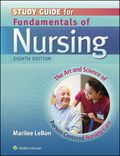
To discuss:
How and why would the nurse respond to or approach this situation.
Case summary:
Mr. L is a 52-year-old male patient who has been diagnosed with diabetes and circulatory problems. He had recently undergone an abdominal surgery and admitted in the critical care unit. The site of the surgical wound is found to be moist and the dressing is secured by a tape. During his stay in the critical care unit, his level of consciousness is low and he moderately responds to touch. Further assessment reveals that Mr. L is developing a pressure ulcer and his caregiver has less concern for him.
Explanation of Solution
As a student nurse, the nurse cannot take direction actions on the staff nurse who cares for the patient, though there is less care is implied. The student nurse makes sure that all actions should only be passed through their clinical instructor who takes necessary actions against the decreased care for the patient.
To discuss:
The adequacy of the skills for professional practice and what that is tell about the nurse.
Case summary:
Mr. L is a 52-year-old male patient who has been diagnosed with diabetes and circulatory problems. He had recently undergone an abdominal surgery and admitted in the critical care unit. The site of the surgical wound is found to be moist and the dressing is secured by a tape. During his stay in the critical care unit, his level of consciousness is low and he moderately responds to touch. Further assessment reveals that Mr. L is developing a pressure ulcer and his caregiver has less concern for him.
Explanation of Solution
The nurse might be student nurse or a trainee nurse, and only the adequacy the nurse faces is that she is not still an Advanced Practice Registered Nurse (APRN), so that she can become as nurse advocate. As a nurse advocate she can demand the rights of the patient and can implement quality care for the patient.
To discuss:
The factors that have affected the assigned nurse’s response to the patient.
Case summary:
Mr. L is a 52-year-old male patient who has been diagnosed with diabetes and circulatory problems. He had recently undergone an abdominal surgery and admitted in the critical care unit. The site of the surgical wound is found to be moist and the dressing is secured by a tape. During his stay in the critical care unit, his level of consciousness is low and he moderately responds to touch. Further assessment reveals that Mr. L is developing a pressure ulcer and his caregiver has less concern for him.
Explanation of Solution
The patient has a decreased consciousness, inability to communicate, and less response of the patient are the factors that affected the assigned nurse’s response to the patient.
To discuss:
Whether the student nurse is affected by any of those same factors.
Case summary:
Mr. L is a 52-year-old male patient who has been diagnosed with diabetes and circulatory problems. He had recently undergone an abdominal surgery and admitted in the critical care unit. The site of the surgical wound is found to be moist and the dressing is secured by a tape. During his stay in the critical care unit, his level of consciousness is low and he moderately responds to touch. Further assessment reveals that Mr. L is developing a pressure ulcer and his caregiver has less concern for him.
Explanation of Solution
The student nurse is not affected by the same factors that affected the assigned nurse. In fact, the student nurse is deeply frustrated by the lack of care given to the patient and the assigned nurse’s disrespect to the patient’s response and his decreased consciousness.
To discuss:
The criteria to evaluate a successful outcome.
Case summary:
Mr. L is a 52-year-old male patient who has been diagnosed with diabetes and circulatory problems. He had recently undergone an abdominal surgery and admitted in the critical care unit. The site of the surgical wound is found to be moist and the dressing is secured by a tape. During his stay in the critical care unit, his level of consciousness is low and he moderately responds to touch. Further assessment reveals that Mr. L is developing a pressure ulcer and his caregiver has less concern for him.
Explanation of Solution
The factors that give successive outcome are:
- The patient should receive high quality care.
- The nurse should never be insulted or respond to the feedback of the patient.
- The nurse should not discriminate the patient on their level of consciousness and response.
To discuss:
Whether the nursing student validate the rationale for the outcome.
Case summary:
Mr. L is a 52-year-old male patient who has been diagnosed with diabetes and circulatory problems. He had recently undergone an abdominal surgery and admitted in the critical care unit. The site of the surgical wound is found to be moist and the dressing is secured by a tape. During his stay in the critical care unit, his level of consciousness is low and he moderately responds to touch. Further assessment reveals that Mr. L is developing a pressure ulcer and his caregiver has less concern for him.
Explanation of Solution
The student nurse cannot validate the rationale of the outcome as the patient died before best quality care is given. The only positive feeling the student had is that, at least she made some efforts to give care for the patient.
To discuss:
The knowledge, skills, and attitudes do you need to develop to continuously improve quality and safety when caring for child patients like Mr. L.
Case summary:
Mr. L is a 52-year-old male patient who has been diagnosed with diabetes and circulatory problems. He had recently undergone an abdominal surgery and admitted in the critical care unit. The site of the surgical wound is found to be moist and the dressing is secured by a tape. During his stay in the critical care unit, his level of consciousness is low and he moderately responds to touch. Further assessment reveals that Mr. L is developing a pressure ulcer and his caregiver has less concern for him.
Explanation of Solution
- The patient should be given highest quality of care.
- Patient should be treated with respect and dignity.
- Nurse should have given proper attention to the patient.
- Nurse should not discriminate the patient based on their decreased consciousness and responded.
- Nurse must provide the patient with emotional support.
Want to see more full solutions like this?
Chapter 31 Solutions
EBK STUDY GUIDE FOR FUNDAMENTALS OF NUR
- Question 1: You are the Community Dietitian for the local public health agency. Recent news coverage has highlighted the state of food insecurity and child hunger in your county. Initial reports indicate that 15% of the population is food insecure. Of this group, 28.4% are children. It is estimated that 86% of the food insecure population is eligible for federal nutrition assistance. You are asked to conduct a community needs assessment and, ultimately, develop an appropriate intervention aimed at reducing hunger. First, however, you must submit a plan for the needs assessment. Complete the following: 1. State the nutritional problem (10 pts) 2. Set the parameters of the assessment (20 pts, 5 pts per bullet) A. State the purpose of the assessment B. Identify the community and target population for this assessment C. Develop 2 goals and 2 SMART objectives for each goal D. Discuss the major categories of community data and target population data E. Specify the types of data you might…arrow_forwardAssignment Instructions: Nursing Research Essay Objective: Select a specific area of nursing that captivates your interest. Compose a comprehensive essay, ranging from 300 to 500 words, that delves into the intricacies of nursing research within your chosen area. It is recommended that you consider the topic carefully as this topic, should be the topic for your course research project: see week 4 assignments. Your essay should elucidate the following points: The Significance of Nursing Research: Explore how nursing research in your selected area contributes to advancements in applied medicine. Discuss the potential achievements and innovations that can arise from dedicated nursing research in this field. Articulate the value and impact of such research on patient care, healthcare practices, and overall medical knowledge. Research Methods and Approaches: Identify the most effective methods for conducting nursing research in your chosen area. Highlight specific topics or research…arrow_forwardThe importance of understanding low meal consumption of residents in a nursing home and how can a nutritionist utilize this in their career? Please not just a short explanation.arrow_forward
- The importance of accommodating special diets (diabetic, low sodium, etc.) in a nursing home and how can a nutritionist utilize this in their career? Please not just a short explanation.arrow_forwardThe importance of making a weekly clean list for kitchen staff in a nursing home and how can a nutritionist utilize this in their career? Please not just a short explanation.arrow_forwardThe importance of keeping a clean food pantry in a nursing home and how can a nutritionist utilize this in their career? Please not just a short explanation.arrow_forward
- I’m finding it a bit difficult to understand the Arrhenius equation and how shelf life relates to pH and temperature. Also in the question that says ‘this solution maintains 80% potency at 30C’, am I correct in thinking the formula would be:t = ln(0.8)/ -karrow_forward4.24 mmmarrow_forwardResearch videos and websites about mission and vision statements in health care organizations. What did you find most interesting? What did you find to be the most positive-sounding parts of the statements? Were there any mission and vision statements that seemed disconnected from each other or out of alignment with the goals of the organization? If so, how might you change them?arrow_forward
- The Importance of Reviewing Department Budget in a nursing home kitchen and how can a nutritionist utilize this in their career? Please not just a short explanation.arrow_forwardThe Importance of Modify a Standard Food Menu in a nursing home and how can a nutritionist utilize this in their career? Please not just a short explanationarrow_forwardThe Importance of QAPI in a nursing home and how can a nutritionist utilize this in their career? Please not just a short explanation.arrow_forward
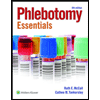 Phlebotomy EssentialsNursingISBN:9781451194524Author:Ruth McCall, Cathee M. Tankersley MT(ASCP)Publisher:JONES+BARTLETT PUBLISHERS, INC.
Phlebotomy EssentialsNursingISBN:9781451194524Author:Ruth McCall, Cathee M. Tankersley MT(ASCP)Publisher:JONES+BARTLETT PUBLISHERS, INC.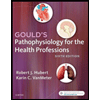 Gould's Pathophysiology for the Health Profession...NursingISBN:9780323414425Author:Robert J Hubert BSPublisher:Saunders
Gould's Pathophysiology for the Health Profession...NursingISBN:9780323414425Author:Robert J Hubert BSPublisher:Saunders Fundamentals Of NursingNursingISBN:9781496362179Author:Taylor, Carol (carol R.), LYNN, Pamela (pamela Barbara), Bartlett, Jennifer L.Publisher:Wolters Kluwer,
Fundamentals Of NursingNursingISBN:9781496362179Author:Taylor, Carol (carol R.), LYNN, Pamela (pamela Barbara), Bartlett, Jennifer L.Publisher:Wolters Kluwer,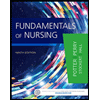 Fundamentals of Nursing, 9eNursingISBN:9780323327404Author:Patricia A. Potter RN MSN PhD FAAN, Anne Griffin Perry RN EdD FAAN, Patricia Stockert RN BSN MS PhD, Amy Hall RN BSN MS PhD CNEPublisher:Elsevier Science
Fundamentals of Nursing, 9eNursingISBN:9780323327404Author:Patricia A. Potter RN MSN PhD FAAN, Anne Griffin Perry RN EdD FAAN, Patricia Stockert RN BSN MS PhD, Amy Hall RN BSN MS PhD CNEPublisher:Elsevier Science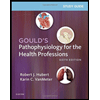 Study Guide for Gould's Pathophysiology for the H...NursingISBN:9780323414142Author:Hubert BS, Robert J; VanMeter PhD, Karin C.Publisher:Saunders
Study Guide for Gould's Pathophysiology for the H...NursingISBN:9780323414142Author:Hubert BS, Robert J; VanMeter PhD, Karin C.Publisher:Saunders Issues and Ethics in the Helping Professions (Min...NursingISBN:9781337406291Author:Gerald Corey, Marianne Schneider Corey, Cindy CoreyPublisher:Cengage Learning
Issues and Ethics in the Helping Professions (Min...NursingISBN:9781337406291Author:Gerald Corey, Marianne Schneider Corey, Cindy CoreyPublisher:Cengage Learning





